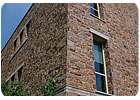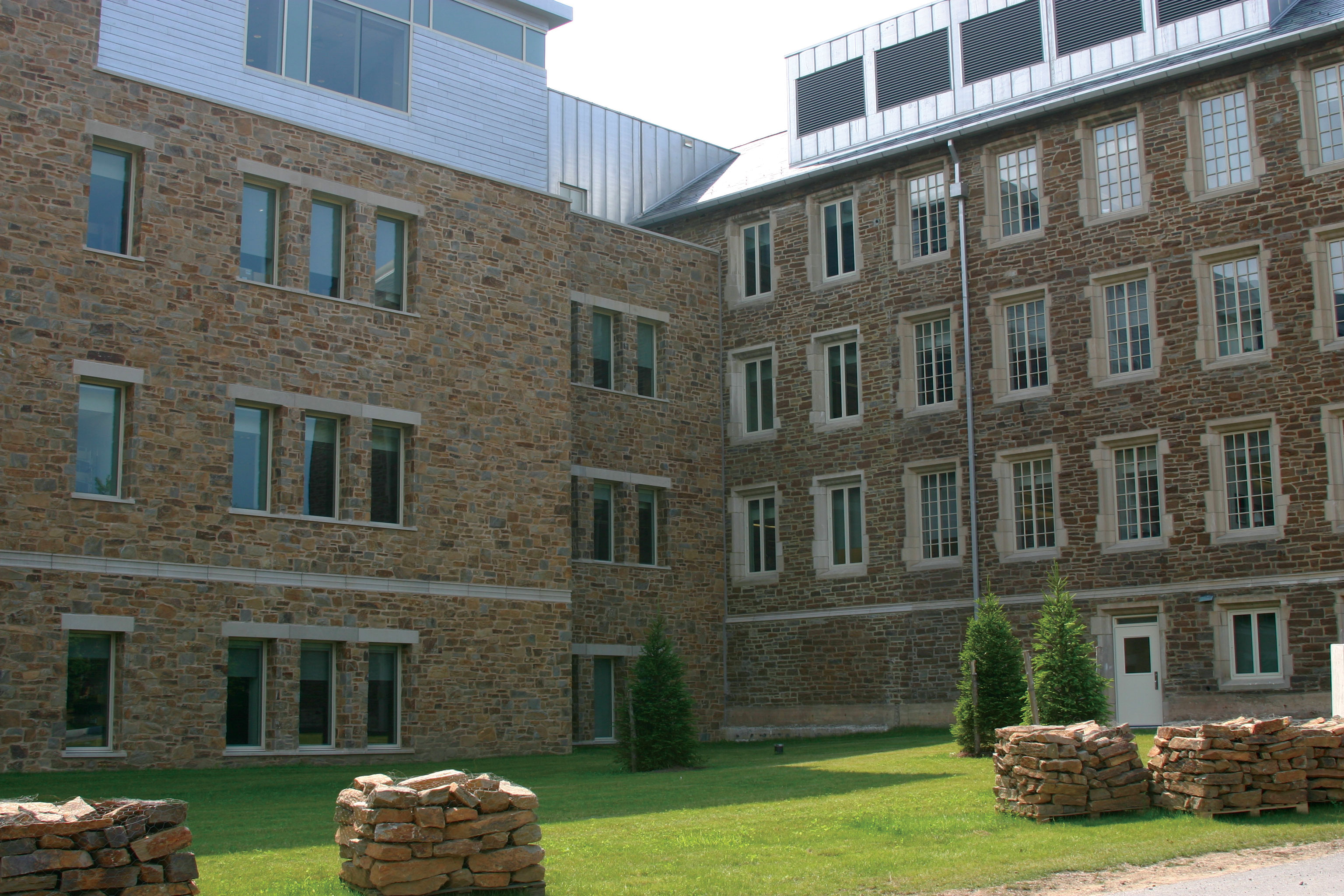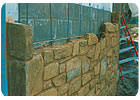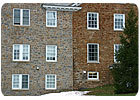
At Hamilton College in Clinton, NY, Trowel Trades Supply, Inc. was hired to locate a stone material to match the Unified Science Center to the surrounding stone buildings on campus. Ultimately, rubble stone from Rolling Rock Building Stone of Boyertown, PA, was selected.

“Much work went into getting just the exact blend of ashlar strips and roughly square/roughly rectangular stones in the right orientation to match the existing stone on the original building,†said Gene Pawlikowski of Trowel Trades Supply.

The material, referred to as the “Hamilton College Blend A†rubble stone veneer, is a sandstone that features a full range of tan, rust and brown with some gray.

Tom Murray from Colonie Masonry explained that installation of the stonework was completed in three separate phases over a two-and-a-half year period, with an average of 15 workers on the job.
Supplying the stone
According to Terrence Meck of Rolling Rock Building Stone, a custom blend of stone was quarried and supplied to match the existing buildings on campus. “We chose to put multiple custom blends together so they had options from which to make a choice,†he explained. “They selected the most natural appearance single-source stone blend - what is defined as 'Hamilton College Blend A,' a rough ashlar blend. It is quarried locally [in Pennsylvania] nearly year round. It is a sandstone with medium density.
According to Terrence Meck of Rolling Rock Building Stone, much work went into “close matching of product and labor to the desired finish application.â€
Since the project began over four years ago, Rolling Rock Building Stone has supplied more than 1,000 tons of 4- to 6-inch-thick bed rubble building stone for the campus, including the Unified Science Center and site walls. The company is also supplying additional stone for future campus development.

The main entrance to the science center features Salem Buff limestone panels, as well as a Crystal Gold granite base and entry pier. Both materials were supplied by Granite Importers, Inc. of Barre, VT. Furthermore, Vermont Unfading Green slate pavers - from Vermont Structural Slate Co. of Fair Haven, VT - were also utilized for the exterior design.

The rubble stone veneer was anchored to a block back-up wall.
Installing the stonework
According to Tom Murray from Colonie Masonry, installation of the stonework was completed in three separate phases over a two-and-a-half-year period, with an average of 15 workers on the job.“We basically had to match the existing work, and we trained a few local bricklayers to the method needed to match the material,†explained Murray. “Once that was accomplished, we made pretty good time on it.â€
Meck said the challenge when working with rubble stone is always the close matching of product and labor to the desired finish application requested by the design team and/or owners. “We are proud of our part in the success, and know the mason did an exceptional job in providing the completed finish the college sought,†he said. “The completed work appears far above expectation.â€

The installers utilized guillotine-snapped stone for elements such as quoins.
Unified Science Center
Clinton, NY
Architect: Einhorn Yaffee Prescott Architecture & Engineering (EYP), New York, NY
General Contractor: Barr and Barr, New York, NY
Stone Suppliers: Rolling Rock Building Stone, Boyertown, PA (Hamilton College Blend A); Granite Importers, Inc., Barre, VT (Salem Buff limestone, Crystal Gold granite); Vermont Structural Slate Co., Fair Haven, VT (Vermont Unfading Green slate)
Stone Installer: Colonie Masonry Corp. of Albany Inc., Schenectady, NY

Before Trowel Trades Supply's involvement, three buildings on Hamilton College's campus had received additions with poor stone matches.